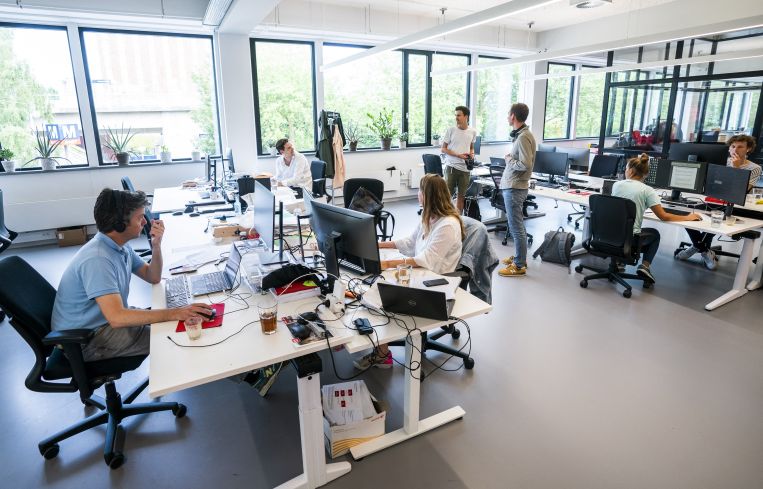Flex Office’s U.S. Growth Is Due to A Lot More Than the Flexible Part
By Christine Wyckoff November 5, 2025 11:40 am
reprints
As the flexible office sector accelerates its transformation of the American workplace, its most formidable competition isn’t the traditional office — it’s the home. Despite this challenge, flexible workspace in the U.S. is experiencing remarkable growth, fundamentally reshaping how companies approach their real estate strategies in 2025 and beyond.
After navigating the disruptions of the pandemic, the U.S. flexible office market has rebounded with renewed momentum. Leasing activity among the top 50 providers has recovered strongly, with the sector now representing 2.6 percent of total office inventory nationwide, up from 2.3 percent a year earlier. More notably, this 11 percent year-over-year growth in inventory signals that flexible offices have shifted from a niche solution to a mainstream component of corporate real estate portfolios.
A key trend driving the growth is companies rethinking their approach to market entry and expansion.

Many organizations now adopt what I call a “coworking-first” strategy — a risk-mitigation approach that offers the “right to be wrong” without significant capital investment. This strategy allows organizations to enter new markets at low cost and effort, test the waters, and make informed decisions whether to lease traditional space or reassess their presence.
This flexibility proves especially valuable for growth-stage companies and those expanding into new regions. Instead of committing to long-term leases with high fit-out costs, they can quickly establish a footprint and adapt as needed. Data supports this shift: The average lease term for flexible office providers has fallen 37 percent over the past five years, from 121 months in 2020 to just 77 months in 2025. Shorter commitments provide providers with greater agility in responding to demand while offering companies the adaptability they need.
Another notable shift in the flexible office landscape is geographic dispersion. While gateway markets remain important, the fastest growth is now occurring in tertiary markets, which grew 10 percent year-over-year as of the second quarter of 2025. Markets like San Diego have seen explosive growth, with flexible office inventory surging 27 percent year-over-year and now representing 3.5 percent of total office inventory.
This expansion into secondary and tertiary markets reflects a fundamental change: Occupiers are seeking locations closer to where their workforce lives. The rise of hybrid work has not eliminated the need for office space — it has redistributed it. Sun Belt markets exemplify this trend, with Miami’s flexible office inventory now accounting for 7.6 percent of total office inventory, among the highest concentrations nationally.
Companies recognize that requiring employees to commute to a central downtown office five days a week is increasingly untenable. Instead, they’re leveraging flexible office solutions to offer convenient locations that reduce commute times while maintaining opportunities for in-person collaboration and culture-building.
Also, as organizations implement return-to-office mandates, many are confronting an unexpected challenge: They’re short on space. Companies that downsized during the pandemic are now discovering that their reduced footprints cannot accommodate increased occupancy.
Flexible office solutions serve as a bridge — both as a short-term fix and a long-term component of a diverse portfolio. Currently, 58 percent of occupiers use flexible space, recognizing its agility in meeting evolving workforce needs.
Beyond cost savings, flexible offices offer three key advantages: shorter lease terms that allow quick pivots; spaces designed to support both collaboration and individual work; and relief from the rising costs of fit-out. These benefits are increasingly critical in today’s market.
A transformative trend is the evolving relationship between building owners and flexible office providers. Landlords are increasingly forming joint ventures with operators rather than simply leasing space. These arrangements enable owners to launch proprietary flexible brands managed by experienced providers, enhancing amenities and occupancy.
This partnership model benefits all parties. Owners gain differentiated offerings and steady occupancy; providers access prime real estate with lower capital expenditure; and occupiers receive high-quality, flexible spaces in desirable buildings. As the market continues to recalibrate post-pandemic, such arrangements are expected to proliferate.
Finally, flexible office providers have long pioneered innovative workspace design, and this leadership continues to influence all office environments. Employees demand spaces that facilitate collaboration while supporting focused work. Flexible operators have mastered creating environments that enhance workstyle flexibility.
This focus on experience and design is reshaping traditional office layouts. Companies increasingly recognize that the primary purpose of the office is to support collaboration and reinforce culture, not just provide desk space — a principle borrowed from flexible office models.
The U.S. flexible office sector stands at a pivotal point, then. It has evolved from a temporary solution or a product exclusively for startups into a strategic tool that occupiers leverage for agility, owners utilize to enhance their properties, and providers continue to refine and expand.
As workplace preferences continue to evolve and economic uncertainties persist, the value proposition of flexible office — adaptability, convenience and experience — will only grow.
Embracing this flexibility positions companies to navigate the transforming American workplace successfully.
Christine Wyckoff is head of Americas flexible office services at Cushman & Wakefield.



